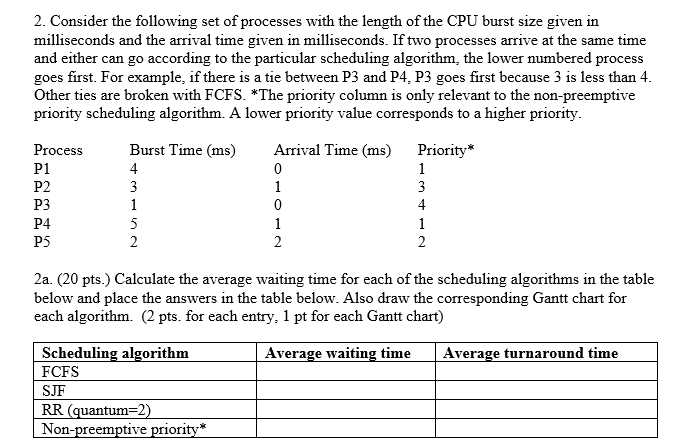Answered step by step
Verified Expert Solution
Question
1 Approved Answer
2. Consider the following set of processes with the length of the CPU burst size given in milliseconds and the arrival time given in milliseconds.

2. Consider the following set of processes with the length of the CPU burst size given in milliseconds and the arrival time given in milliseconds. If two processes arrive at the same time and either can go according to the particular scheduling algorithm, the lower numbered process goes first. For example, if there is a tie between P3 and P4, P3 goes first because 3 is less than 4. Other ties are broken with FCFS. *The priority column is only relevant to the non-preemptive priority scheduling algorithm. A lower priority value corresponds to a higher priority. Process P1 P2 P3 Burst Time (ms) 4 3 1 5 2 Arrival Time (ms) 0 1 0 1 2 Priority* 1 3 4 1 2 P4 P5 2a. (20 pts.) Calculate the average waiting time for each of the scheduling algorithms in the table below and place the answers in the table below. Also draw the corresponding Gantt chart for each algorithm. (2 pts. for each entry, 1 pt for each Gantt chart) Average waiting time Average turnaround time Scheduling algorithm FCFS SJF RR (quantum=2) Non-preemptive priority*
Step by Step Solution
There are 3 Steps involved in it
Step: 1

Get Instant Access to Expert-Tailored Solutions
See step-by-step solutions with expert insights and AI powered tools for academic success
Step: 2

Step: 3

Ace Your Homework with AI
Get the answers you need in no time with our AI-driven, step-by-step assistance
Get Started


